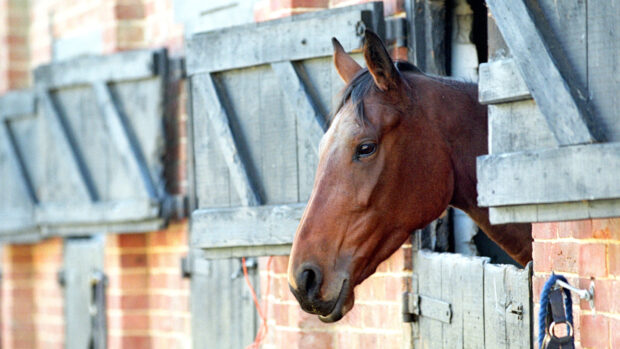Keeping your horse happy and healthy while on box rest can pose a challenge for many owners — from combatting box rest blues and managing a reduced diet to the possibility that your horse’s legs may fill overnight
What should you do if your horse has a filled leg?
Investigate
“First off, you should investigate to ensure there is no underlying reason why the legs are filling,” advises Kate Granshaw, partner and full-time vet at Lingfield Equine Vets.
“There could be a whole range of causes — bacterial skin infections, injuries and viral infections are among the most common.”
Andy Fiske-Jackson, specialist surgeon at the Royal Veterinary College adds: “The more sinister causes of filled legs requiring veterinary attention could be infection, vasculitis (inflammation of the blood vessels) or lymphangitis (inflammation of the walls of the lymphatic vessels) — these cases will be lame, usually on a single limb and will likely be painful to palpate.
“Another cause could be low blood protein causing fluid to ‘leak’ out of the circulation — this can be due to inadequate intake or production (liver disease), or loss from the circulation, for example parasitism (‘worms’). It could also be caused by skin hypersensitivity (an allergic reaction) and rarely it could be heart, kidney or lung disease.”
If your horse is showing any other signs in addition to the filled legs, you should contact your veterinary surgeon.
Exercise
“Movement helps move lymph fluid through the lymphatic system back into the circulation,” says Andy. “Walking in-hand twice a day will help prevent limb oedema.”
Although your horse’s movement is obviously restricted on box rest, controlled exercise can be an important part of the rehabilitation phase.
However, do be prepared for your horse to be more exuberant than usual. Use a bridle and, if you have a sand school, consider walking him there rather than risk taking him on the roads. Similarly, if you have a horse walker and your horse is calm enough to use it, make the most of it.
Cold hosing
“I don’t routinely recommend cold hosing every filled leg, but it is a sensible option if the limb is clearly hot and infected,” says H&H vet Karen Coumbe. “The first thing I would suggest is to try and work out why and then try some gentle exercise, providing there is no lameness. A diagnosis is most important, sometimes there can be a tiny puncture wound causing a huge forelimb with cellulitis.”
It is also important to consider the simple and obvious causes, such as excess feed and insufficient work, which can often cause both hind limbs to fill with sometimes quite pronounced oedema. Swelling in a single limb usually reflects a local problem, whereas swelling in several limbs may be due to systemic disease or a skin problem, such as mud fever affecting more than one leg.
Choosing the right treatment will obviously depend on the cause. Equine manual lymphatic drainage (MLD) therapist Heather Powell argues that cold hosing can have a negative affect: “When the lymphatic system drops below a certain temperature, it stops working,” she says.
It is always best to obtain professional advice on the issue.
Bandaging
“Bandaging may well help where appropriate, however they must never be too tight,” adds Karen. “It is worth remembering that if the leg swells any more than when you put the bandage on, it will become too tight, and if the swelling goes down, the bandage will become too loose.”
MLD therapist Heather argues: “Bandages give the illusion that the leg isn’t filling, but actually, the leg is filling above the bandage. In fact, bandages can compress and restrict the tiny lymph vessels, preventing them from draining the leg.”
Like this? You might also enjoy reading these:
Is your horse on box rest? If so, this might sound familiar…
Struggling with mud fever? Here’s what you need to know to tackle it…
Prevention
“Ensure you look after the horse’s legs and feet to prevent them filling, for example ensuring the feet are kept well trimmed,” says Kate Granshaw. “Also, make sure legs don’t remain cold, wet and muddy for long periods of time by washing mud off and towel drying.”
Karen adds: “Medication, such as antibiotics, should only be prescribed by your vet for cases that really need them.”



